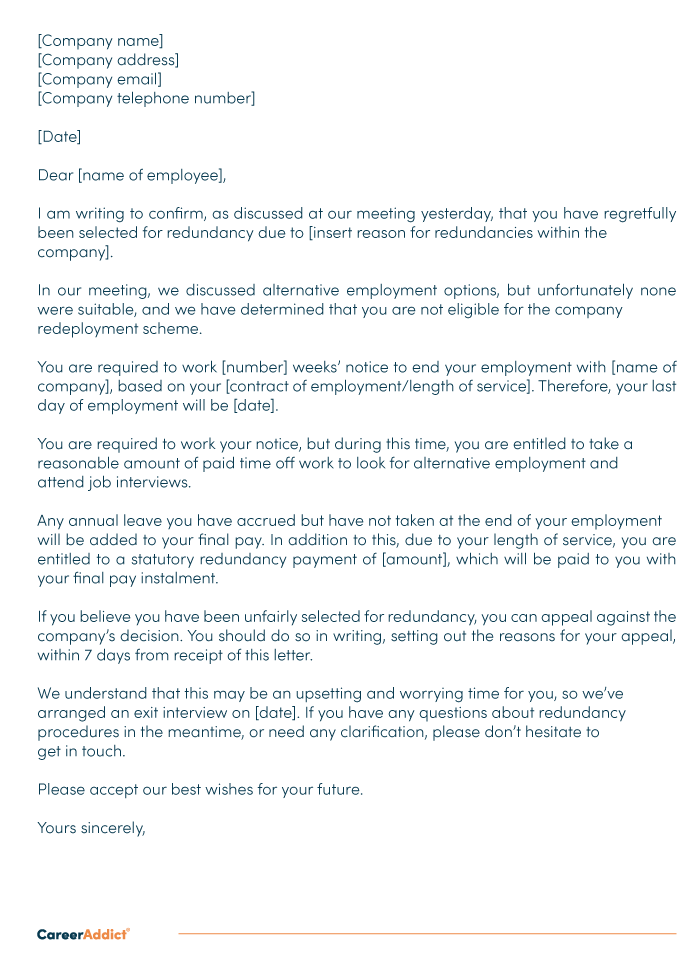Explained: If a Company Goes Bust Who Pays Redundancy in the UK?
Explained: If a Company Goes Bust Who Pays Redundancy in the UK?
Blog Article
Exploring the Operational Dynamics of Firm Redundancy and Its Long-Term Sustainability

Redundancy Strategies for Organization Connection
In order to make sure continuous procedures, companies must implement effective redundancy approaches for service continuity. Redundancy in this context describes the duplication of essential components or functions within a system to alleviate the impact of potential failings. By incorporating redundancy techniques, organizations can boost their durability versus disruptions triggered by numerous factors such as all-natural disasters, equipment failings, or cyber-attacks.
One usual redundancy strategy is the application of backup systems and data storage space remedies. This entails creating matches of necessary data and systems that can be activated in instance of a key system failure. Furthermore, companies can develop redundant interaction channels and power sources to preserve connectivity and operations throughout unanticipated events.
Additionally, cross-training staff members to do multiple duties within the company can work as a valuable redundancy strategy. If key personnel are not available due to health problem or various other reasons, this guarantees that vital tasks can still be lugged out also. On the whole, effective redundancy approaches are important for companies to maintain operational continuity and lessen the impact of potential disturbances.
Impact of Redundancy on Organizational Durability
Offered the vital function redundancy techniques play in making certain service continuity, checking out the impact of redundancy on business resilience ends up being vital for comprehending the alternative operational characteristics of a business. Redundancy, when tactically executed, can considerably add to enhancing an organization's resilience in the face of unanticipated obstacles.
Moreover, redundancy can reinforce employee spirits and self-confidence, knowing that there are contingency strategies in area to attend to unexpected conditions. This feeling of security can result in increased efficiency and an extra favorable work atmosphere. Additionally, redundancy can foster advancement and creative thinking within an organization as workers really feel empowered to take computed dangers, recognizing that there is a safeguard to support them in case of failing. Generally, the impact of redundancy on business strength is profound, forming the long-term sustainability and success of a company.
Stabilizing Effectiveness and Versatility in Redundancy
Accomplishing a harmonious stability between functional efficiency and flexible adaptability is a critical obstacle in the calculated deployment of redundancy within organizations. Efficient procedures are important for maintaining performance and cost-effectiveness, ensuring that sources are utilized ideally. However, extreme focus on performance alone can bring about rigidity, making it hard for companies to adapt to unexpected modifications or difficulties. On the various other hand, adaptability permits companies to react nimbly to evolving conditions, cultivating development and durability. Yet, excessive adaptability without a strong functional foundation can lead to inefficiencies and disparity.
To balance performance and adaptability in redundancy planning, organizations need to very carefully assess their functional requirements, market characteristics, and tactical objectives. Carrying out lean methods can enhance performance by improving procedures and removing waste, while promoting a culture of adaptability and continual enhancement can increase versatility. Furthermore, investing in cross-training programs and robust communication channels can assist grow a versatile labor force with the ability of dealing with varied jobs during durations of transition. Eventually, discovering the appropriate stability between performance and flexibility is essential for developing a sustainable and resilient company in the face of unpredictability.
Long-Term Sustainability Through Redundancy Preparation
To make certain long-lasting feasibility and security, organizations have to purposefully align their redundancy preparation with long-term sustainability goals, thus balancing functional performance with adaptive flexibility. Long-lasting sustainability through redundancy planning includes greater than just temporary cost-cutting actions. It needs a detailed critical strategy that expects future obstacles and possibilities. Business should check out redundancy not as a reactive service to prompt troubles yet as a positive method for long-term success. By integrating redundancy preparation with sustainability purposes, companies can develop a resistant framework that can endure various market changes and internal adjustments.

Positive Steps for Lasting Firm Procedures
How can business proactively enhance their operational sustainability for long-term success? Applying positive actions is necessary for business intending to ensure sustainable operations.
Moreover, promoting a society of continual renovation and knowing within the company can boost versatility to transforming market problems and consumer needs. Encouraging worker involvement in decision-making processes and supplying possibilities for specialist advancement can increase spirits, efficiency, and overall efficiency. Establishing clear goals, keeping an eye on vital efficiency signs, and routinely reviewing progress are important elements of positive sustainability monitoring.
Collaborating with vendors, consumers, and other stakeholders to promote sustainable techniques throughout the supply chain can produce a causal sequence of positive influence - redundancy pay if company goes bust. By taking aggressive actions in the direction of operational sustainability, business can develop durability, drive development, and secure their long-term success in an ever-evolving company landscape
Conclusion

In the realm of business monitoring, the tactical implementation of company redundancy stands as a crucial yet elaborate practice that necessitates a delicate balance in between functional efficiency and lasting practicality. By dissecting the operational dynamics that underpin business redundancy and examining its more comprehensive effects for organizational strength and versatility, a nuanced understanding of exactly how redundancy techniques can shape the future trajectory of a company begins to unravel.Given the essential role redundancy techniques play in making certain service continuity, checking out the impact of redundancy on organizational strength ends up being crucial for recognizing the alternative operational characteristics of a firm. Overall, the influence of redundancy on organizational durability is profound, forming the long-term sustainability and success of a business.
In conclusion, recognizing the functional dynamics of business redundancy is vital for ensuring long-lasting sustainability.
Report this page